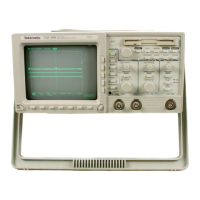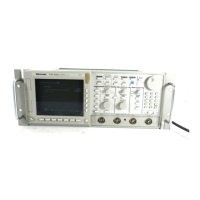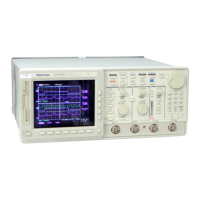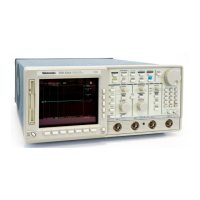TDS 340A, TDS 360 & TDS 380 User Manual
Glossary–1
Glossary
AC Coupling
A mode that blocks the DC component of a signal but passes the dynamic
(AC) component of the signal. Useful for observing an AC signal that is
normally riding on a DC signal.
Acquisition
The process of sampling signals from input channels, digitizing the samples,
processing the results into data points and assembling the data points into a
waveform record. The waveform record is stored in memory.
Active Cursor
The cursor that moves when you turn the General Purpose Knob. The @
readout on the display shows the position of the active cursor.
Aliasing
A false representation of a signal due to insufficient sampling of high
frequencies or fast transitions. A condition that occurs when an oscilloscope
digitizes at an effective sampling rate that is too slow to reproduce the input
signal. The waveform displayed on the oscilloscope may have a lower
frequency than the actual input signal.
Attenuation
The degree the amplitude of a signal is reduced when it passes through an
attenuating device such as a probe or attenuator, that is, the ratio of the input
measure to the output measure. For example, a 10X probe attenuates, or
reduces, the input voltage of a signal by a factor of 10.
Auto Trigger Mode
A trigger mode that causes the oscilloscope to automatically acquire if it
does not detect a triggerable event.
Autoset
A function of the oscilloscope that automatically produces a stable waveform
of usable size. Autoset sets up front-panel controls based on the characteris-
tics of the active waveform. A successful autoset sets the volts per division,
time per division, and trigger level to produce a coherent and stable
waveform display.

